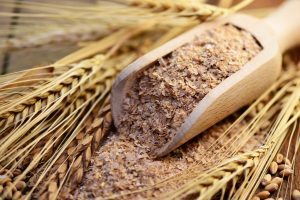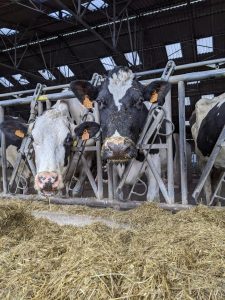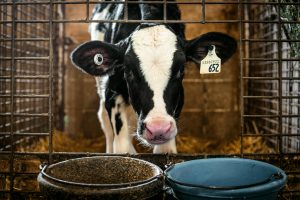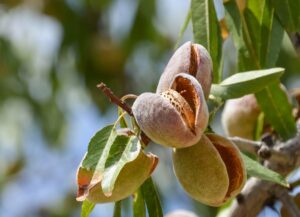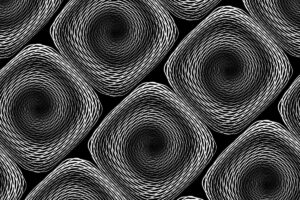Álvaro García
By the time a heifer enters the milking herd, the management practices used during her early life are often overlooked. But recent research confirms that what happens in the calf barn, particularly in the weeks before weaning, leaves a lasting imprint on her future milk production. A new meta-analysis that combined results from 18 different studies looked at how calves’ early growth and feeding patterns affect their first-lactation performance. The findings offer clear, practical guidance for dairy producers aiming to raise replacement heifers that become productive, long-lasting members of the herd.
A strong predictor of future performance
One of the main goals of that research was to understand whether faster growth in heifer calves before weaning, often measured as average daily gain (ADG), results in more milk, fat, or protein later when they enter the milking herd. The data showed that calves who gained weight faster before weaning produced more milk during their first lactation. On average, for every extra 0.22 pounds (100 grams) of daily weight gain during the preweaning period, first-lactation milk yield increased by about 660 pounds (300 kilograms). That’s a meaningful increase, especially when spread across all first lactation cows in the herd. More importantly, the same trend held for both fat and protein yields, which are critical components of milk value. This confirms what many producers and calf raisers have long suspected in that a well-grown calf becomes a better-producing cow.
Why early investment matters
Raising a heifer to the point where she enters the milking string is a major investment, often ranging from $1,800 to $2,500 depending on feed costs, labor, housing, and health care. This means that a cow doesn’t start paying back her rearing costs until well into her second lactation. Yet industry data shows that many cows are culled before they reach their third lactation, with the national average hovering around 2.7 lactations per cow.
This trend puts real pressure on replacement economics. If a cow leaves the herd before reaching her full productive potential, that upfront investment is lost. For that reason, any strategy that improves a heifer’s early development and leads to higher milk yields, especially in the first lactation, becomes even more important. It can shorten the time it takes to recover rearing costs and increase the odds she will remain in the herd longer.
Preweaning growth is one of those strategies. By supporting steady early gains and developing strong, healthy calves, producers improve the chances that they will not only make it to the milking herd but stay in it long enough to justify the cost of raising them. In other words, early growth doesn’t just impact biology — it affects the bottom line.
Setting the stage for success
But growth doesn’t happen without excellent feed, and how much milk or milk replacer calves drink before weaning also plays a key role. The study referenced found that milk intake had a positive effect on future milk production, but the relationship wasn’t unlimited. Calves that consumed around 1.74 to 1.76 pounds (0.79 to 0.80 kilograms) of milk solids per day, roughly 1.6 to 2.1 gallons (6 to 8 liters) of whole milk or an equivalent amount of milk replacer, achieved the best first-lactation results. Feeding more than that didn’t lead to better outcomes and may even have drawbacks. High milk feeding levels can reduce starter grain intake, which is important for rumen development. A calf that fills up on milk may be slower to transition to solid feed, potentially delaying weaning and rumen function.
Interestingly, the amount of calf starter consumed before weaning was not a strong predictor of first-lactation milk yield. That doesn’t mean starter isn’t important, it still plays a key role in preparing the rumen for performance after weaning. However, it suggests that starter alone, without sufficient overall growth and milk feeding, doesn’t drive long-term performance. In fact, when all three factors, daily gain, milk intake, and starter intake, were considered together, only preweaning weight gain consistently predicted higher milk and fat yields in the first lactation. For milk protein yield, both daily gain and milk intake played a role.
Another important point to consider is weaning age. In studies where calves were weaned earlier at around 6 weeks, daily gain tended to be lower, likely due to the stress of transitioning to starter feed before the rumen is fully ready. On the other hand, studies that weaned calves at 8 to 10 weeks showed higher preweaning gains and better later performance. This supports a strategy of later weaning when it can be managed properly, allowing more time for growth and smoother transition.
Finding the right balance with replacer
In situations where non-saleable milk is limited, milk replacer becomes the most practical and cost-effective feeding option for young calves. Aside from economics, high-quality replacer offers consistency in nutrients and reduces the risk of disease transmission from whole milk. But when replacer is used, one critical question remains: what is the right amount to feed, and how should calves be weaned to support growth without compromising rumen development?
Feeding larger amounts of milk or replacer early in life is known to promote higher body weight at weaning. However, studies have shown that this early advantage may fade within a few weeks if the calf isn’t transitioned properly to solid feed. The likely reason is that calves consuming large volumes of liquid feed tend to eat less starter, which slows down rumen development. This can make the postweaning period more challenging in terms of growth and nutrient digestion.
For instance, in one study, calves fed 2.1 gallons (8 liters) of milk replacer per day weighed about 8.2 pounds (3.7 kilograms) more at weaning than calves receiving 1.6 gallons (6 liters). However, by four months of age, the weight difference disappeared. Similar findings have shown inconsistent effects on average daily gain depending on how weaning was managed.
More recent research has focused on how different weaning approaches influence growth and digestion when replacer feeding rates are high. In one experiment Holstein calves fed either moderate or high amounts of replacer and weaned either abruptly or gradually using step-down protocols (Klopp et al. 2020). While calves fed more replacer grew faster before weaning, they experienced reduced growth afterward unless they were weaned gradually over a three-week period. In contrast, moderate replacer-fed calves caught up in growth by the end of the trial, regardless of the weaning approach. The results confirmed that calves on high-replacer programs need a more gradual transition to solid feed to avoid a drop in performance after weaning.
The key takeaway is that high replacer intake can be beneficial, but only when paired with a thoughtful weaning strategy. Gradual weaning helps maintain postweaning growth by giving the rumen time to adapt. For calves on more moderate replacer programs, a simpler one-week step-down may be sufficient.
A practical takeaway
Current findings reinforce the value of investing in calf nutrition and management from day one. Aiming for daily gains above 0.7 kilograms (1.5 pounds) is a reasonable benchmark. Feeding milk at levels that support growth, while still encouraging starter intake, appears to strike the right balance. And while it is tempting to minimize calf-rearing costs in the short term, cutting corners during this critical window could mean lower milk yields and lower returns later.
For producers, this means rethinking calf programs not just as a cost center, but as an investment in future performance. Every liter of milk or milk replacer, every day a calf gains weight, contributes to the potential of that animal as a productive member of the herd. With careful attention to growth and feeding before weaning, those heifers are more likely to repay that investment later in the parlor.
© 2025 Dellait Knowledge Center. All Rights Reserved.



